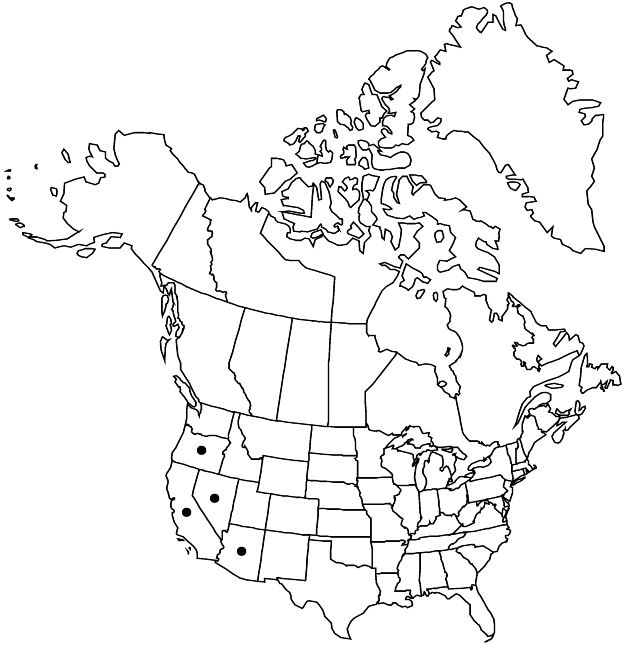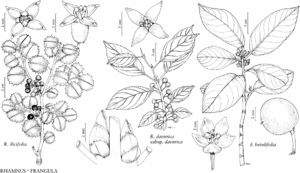Rhamnus ilicifolia
Proc. Calif. Acad. Sci. 2: 37. 1863. (as ilicifolius)
Shrubs or small trees, 1–4 m, unarmed. Branchlets gray, stiff, glabrous or densely and softly hirtellous. Leaves persistent, alternate; petiole 2–10 mm; blade usually dull green, sometimes reddish brown, abaxially, glossy to dull green adaxially, broadly elliptic to oblong, orbiculate, or ovate, 2–4.5 cm, distinctly coriaceous, base cuneate to nearly truncate, margins spinulose to spinose-dentate, apex rounded or obtuse to truncate or emarginate, both surfaces glabrous; secondary veins 5–7 pairs, all diverging at nearly same angle. Inflorescences fascicles or flowers solitary. Pedicels 2–4 mm. Sepals 4. Petals 0. Drupes red, globose, 4–6(–8) mm; stones 2. 2n = 24.
Phenology: Flowering Jan–Jun.
Habitat: Canyon slopes and bottoms, rock faces, open hillsides, sandstone ridges, serpentine slopes, roadsides, stream benches, riparian areas, meadows, coastal sage scrub, chaparral/desert transition, chaparral, woodlands, montane forests.
Elevation: 100–2200(–2400) m.
Distribution

Ariz., Calif., Nev., Oreg., Mexico (Baja California).
Discussion
Selected References
None.
